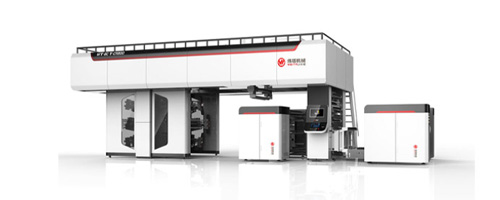 RU
RU
 EN
EN
 CN
CN

Position:HOME > Ink Knowledge

The pattern on the printing plate is prominent, the blank place is concave, through the anilox rollers to transfer ink, generally printed with water-based and UV inks, can reach 400 meters per minute. Flexographic printing is also a kind of letterpress printing.

The printing pattern on the surface of the printing plate is concave, the blank space is protruding, the printing ink layer is very thick, the color is bright, the line is clear, and the saturation is high. Solvent-based ink and water-based ink are available!

The graphic part and the blank part is in the same plane, to the surface of the printing plate inking, only the graphic part of the adsorption of ink, plate work is simple, low cost, suitable for large quantities of printing, mainly using solvent-based inks.

The printing plate consists of a number of small sieve holes, non-graphic part of the mesh is coated with a photopolymer coating sealed, printing adaptability, thick ink layer, three-dimensional sense of strong, bright colors, mainly solvent-based ink.
UV ink (ultraviolet light curing ink) is an advanced ink that utilizes ultraviolet light sources for curing, and is widely used in various industries due to its
Jun 21 2024
UV ink is widely used in the printing industry due to its rapid curing, high durability, and environmental friendliness. However, poor adhesion of UV ink often becomes a tricky issue in the actual production process, affecting the quality and performance
Jun 19 2024
UV ink (ultraviolet curing ink) is a type of ink that cures through exposure to ultraviolet (UV) light. Unlike traditional inks, UV ink does not require evaporation or chemical reactions for drying during the printing process. Instead, it solidifies insta
Jun 17 2024
UV inks, also known as UV Curable Inks, indeed fall within the category of environmentally friendly inks. Here is a detailed explanation of the environmental friendliness of UV inks:
Jun 13 2024
Flexographic UV inks and UV inkjet inks are two different types of UV curing inks that exhibit significant differences in ink formulations, technical characteristics, and application areas.
Jun 05 2024
Whether a water-based ink is food-grade depends on its composition, production process, and whether it meets relevant food safety standards. Food-grade inks are usually used in food packaging and labels,
Jun 03 2024
Water-based ink, a gradually popular environment-friendly ink in the printing industry in recent years, possesses numerous advantages over traditional oil-based ink in terms of environmental protection, safety, performance, and cost-effectiveness.
Jun 02 2024
Water-based ink is an ink that uses water as its primary solvent or dispersion medium, widely applied in the printing industry. Unlike traditional solvent-based inks, water-based ink uses water as the main diluent,
May 29 2024
Ultraviolet curing ink (UV ink) is an ink that can rapidly cure under ultraviolet (UV) light exposure. It primarily consists of pigments, binders, photoinitiators, and additives. Among them, the binder is the fluid component of the ink
May 27 2024
Food grade inks refer to special inks that, once dried, can safely come into contact with food without contaminating it. Although these inks are not edible, the
May 24 2024